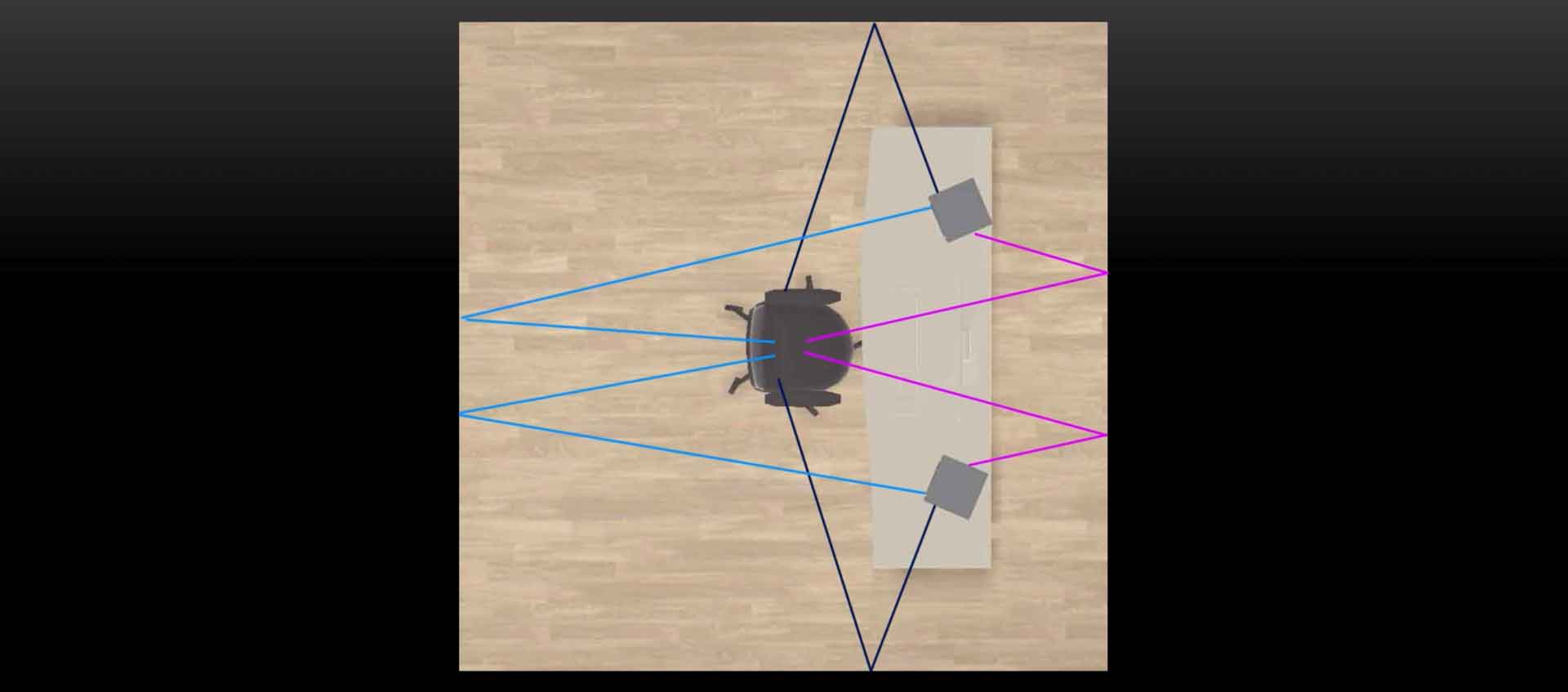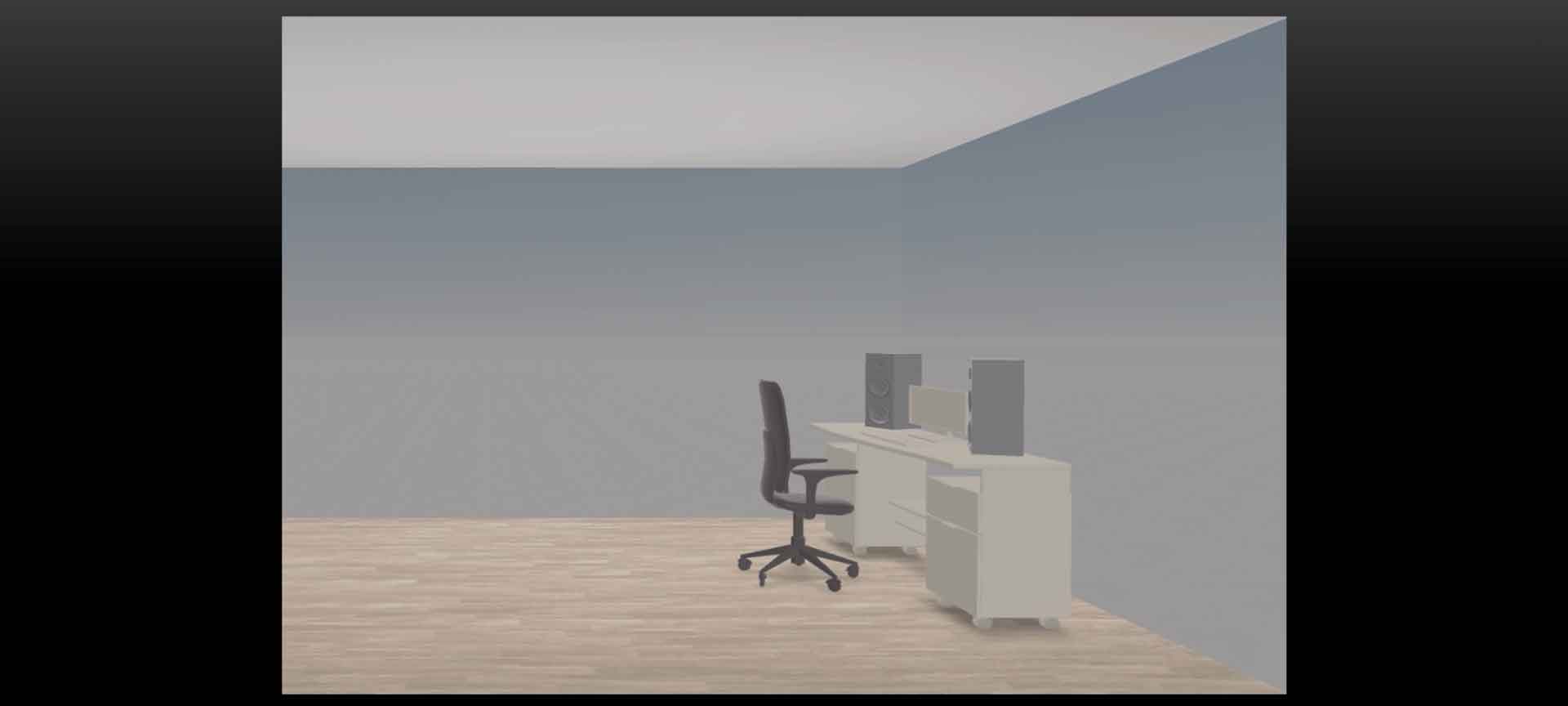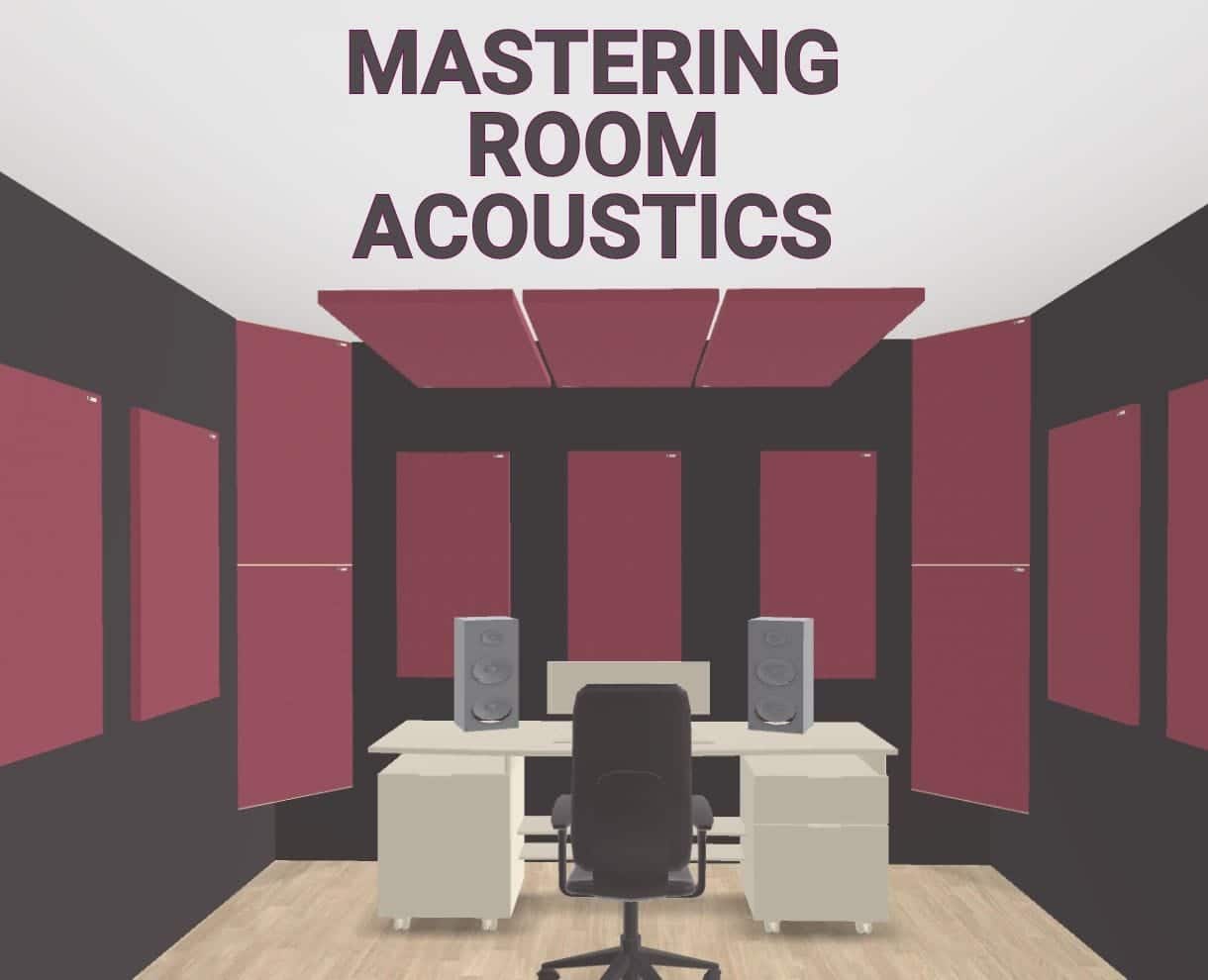Welcome to this blog post, where we will dive deep into the most popular topics about room acoustics and discuss the best ways to achieve a great-sounding room for your mixing needs.
We will cover early reflections, room modes, standing waves, how to correctly place monitors and the benefits of using acoustic panels for treatment.
Early Reflections

Let’s start talking about Early Reflections, which are sound waves that reflect off surfaces such as walls, ceilings, and floors before reaching the listener’s ears.
They introduced unwanted sound distortions from the direct sound coming from the speakers, creating a smeared sound image and a fake sound perception.
This can be avoided by using acoustic treatments such as diffusers and bass traps to absorb and diffuse these reflections or, as the last choice, foam panels.
Room Modes
The interaction of Sound Waves in a room causes Room Modes that consequently create the so-called Standing Waves.
Standing Waves are Points of Cancellation (or enhancement) we can’t fix with any treatment.
Even though Standing Waves can be reduced by using bass traps and diffusers placed in specific positions in the listening room, it is strongly suggested to avoid placing the listening spot where standing waves are located in the listening room
So, when sound waves interact with the listening room walls, they produce Standing Waves, creating resonances that can cause low frequencies to become louder and cause the sound to become distorted and muddy.
The wrong acoustic perception of our room can lead to incorrect mixes unable to translate outside the studio.
That’s why when you listen to your mix in your car (for example) the same mix that you feel good in your room, is horrible in your car.
Speaker Placement

Speaker placement is crucial to reduce distortion from early reflections and obtain a better stereo image in your listening spot.
When placing your monitors, you need to take into account different things:
1) Speakers are at the correct height
2) Speakers are at a proper distance from your ears and walls
3) Speakers are angled correctly
To obtain the best listening experience, in conjunction with a proper and efficient room acoustic treatment, speaker placement is undoubtedly an essential aspect to care about.
Acoustic Panels
Finally, acoustic panels are a great way to reduce sound reflections and improve the sound of your room.
You can build your DIY acoustic panel with 4-6 inch thick Rockwool or rigid fiberglass and place them on the reflection points in your room. They will be your broadband absorption panels.
They can reduce background noise and absorb excess sound energy, making your room more transparent and balanced.
Thicker panels will work even better, and if you also have the space to leave an air gap between the panels and the wall, you will lower the minimum frequency the panel will be able to absorb
Understanding Room Acoustics
Creating the perfect listening environment is an art and science. From concert halls and home theaters to office spaces, room acoustics influence how sound is perceived. Whether you want to enhance your movie nights or improve communication clarity in a meeting room, understanding room acoustics is the first step. This article dives into the what, why, and how of optimizing room acoustics for a superior auditory experience.
Introduction to Room Acoustics
Room acoustics refers to how sound waves behave in a physical space. Sound doesn’t just travel in a straight line—its interaction with walls, ceilings, floors, and objects defines how it’s heard. A room’s size, shape, and materials play a critical role in shaping its acoustic profile.
For example, consider the difference between shouting in a crowded gymnasium and in your living room. The hard surfaces of a gym amplify echoes, while your living room’s carpets and curtains absorb them. Knowing these interactions helps craft an environment that feels and sounds just right.
The Importance of Room Acoustics
Why does room acoustics matter? Poor acoustics can turn even the best sound systems into a frustrating listening experience. Bad sound kills productivity in offices, diminishes enjoyment in entertainment spaces, and even affects our well-being by adding unnecessary noise stress.
On the flip side, rooms with optimized acoustics can boost concentration, enhance productivity, and deliver crystal-clear sound quality. For example, think of a home theater where every dialogue and musical note is crisp. Or a classroom where students can hear the teacher clearly without distractions. Effective acoustics make sound not just audible but enjoyable.
Factors Affecting Room Acoustics
Several elements shape the way a room handles sound. Some of the most influential factors include:
- Hard surfaces: Materials like tiles and glass reflect sound waves, causing echoes.
- Soft surfaces: Curtains, carpets, and cushions absorb sound waves, reducing echoes and softening noise levels.
- Room height: High ceilings can cause soundwaves to linger longer, increasing reverberation times.
- Furniture arrangement: Even the placement of bookshelves, desks, or chairs can affect how sound travels or disperses.
For instance, an empty room will sound vastly different than a furnished one. If you’ve moved into a new house with bare floors and minimal furniture, you likely noticed the echo—and how it faded as you added rugs and couches.
Elements of a Room with Good Acoustics
What makes a room sound “right”? Here are the defining features of spaces with good acoustics:
- Minimal reverberation: Sound should fade quickly rather than bouncing endlessly.
- Uniform sound distribution: Every listener in the room hears sound equally, without “dead zones” or overly loud spots.
- Controlled sound levels: The room isn’t too loud or too quiet; it’s comfortable and balanced.
- Low background noise: Distracting noises from outside or HVAC systems are minimized.
For example, a well-designed recording studio is acoustically “neutral” so that the sound being recorded is clear and unaffected.
Sound Waves and Room Acoustics
Sound waves in a room take two basic forms:
- Direct sound: Travels directly from the source to the listener without interference.
- Reflected sound: Bounces off room boundaries (walls, floors, ceilings, or objects) before reaching the listener.
Reflected sound can be a double-edged sword. It creates a sense of spaciousness—think of how majestic music sounds in a cathedral. However, too much reflection can cause distortion, as some notes grow louder while others are canceled out.
For example, in a small, square room with minimal furnishings, reflected sound may dominate, creating unpleasant echoes. Understanding and controlling these interactions makes a room sound great.
Acoustic Treatment Options
If your room acoustics aren’t ideal, don’t worry—there are ways to fix them! Common acoustic treatments include:
- Absorption: Materials such as foam panels, carpets, or heavy drapes absorb sound and reduce unwanted echoes.
- Diffusion: Acoustic diffusers spread sound waves evenly, preventing harsh echoes and maintaining clarity.
- Soundproofing: While not directly improving internal acoustics, soundproofing keeps external noises out, creating a quieter room.
- Acoustic tuning: Customizing acoustic elements for specific needs, such as a home studio.
For example, installing acoustic panels behind a home theater speaker can prevent harsh reflections, making movie dialogue clearer. Alternatively, adding thick rugs to a reflective wooden floor can dramatically improve sound warmth.
Designing a Room for Good Sound
If you’re building or renovating, it’s best to incorporate good acoustic design from the start. Here’s what to consider:
- Room dimensions and shape: Avoid perfect squares or cubes, which tend to amplify certain sound frequencies. A 1 : 1.4 : 1.9 ratio (height : width : length) reduces resonances and improves sound balance.
- Ceiling design: High, sloped ceilings scatter sound waves, leading to a more natural sound.
- Speaker placement and seating: Arrange speakers to minimize direct reflections from walls and furniture for truer sound reproduction.
Picture a home theater where soft furniture, carefully placed speakers, and a high ceiling create a movie-like audio experience. That’s the result of thoughtful design.
Measuring and Analyzing Room Acoustics
How do you know if a room sounds good? Measurements provide valuable insights. Tools such as sound level meters and acoustic analysis software can evaluate key factors like reverberation time, clarity, and background noise.
For instance, recording studios often analyze a room’s frequency response to identify problem frequencies. This data informs where to place absorbers or diffusers.
If this feels technical, don’t worry—professionals can help!
Expert Help for Room Acoustics
Sometimes, DIY solutions can only get you so far. For complex scenarios, like concert halls or professional studios, acoustic consultants offer invaluable expertise.
These experts use advanced tools to measure room acoustics, design targeted solutions, and oversee installation. While hiring professionals involves an upfront cost, their guidance often saves money in the long run by ensuring effective, lasting results.
Case Studies and Examples
Real-world examples showcase the impact of good acoustics.
- Concert halls: Renovations in venues such as Boston’s Symphony Hall have employed acoustic engineering to achieve perfect sound clarity, no matter where you sit.
- Home theaters: Even simple changes, like using sound-absorbing curtains, can make a marked difference.
- Recording studios: From Abbey Road Studios to small home setups, acoustic treatment transforms recordings from amateur to professional quality.
Learning from these cases not only inspires but also offers practical takeaways for improving your own spaces.
Conclusion
If you want to create great-sounding mixes, it is important to consider the acoustics of the room you are mixing in.
By treating and taming early reflections, room modes, and standing waves with proper acoustic treatment, you can create a space that is optimized for mixing which will help you get great-sounding results in less time with minimum effort.
The sound of a room affects more than just our ears—it alters our overall experience. By understanding room acoustics, identifying problem areas, and applying acoustic treatments, you can create a space where every sound is vivid and clear.
Whether it’s turning your living room into a cinema-quality theater or improving workplace communication, acoustics matter. Start small with furniture placement or acoustic panels—or take it to the next level with professional help. The result? A world of sound as it was meant to be heard!









